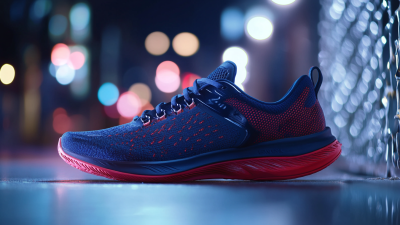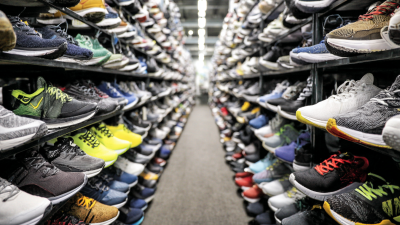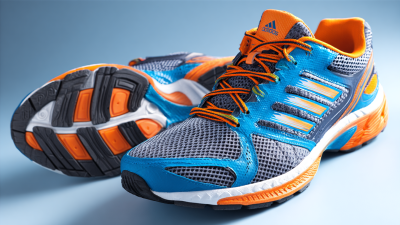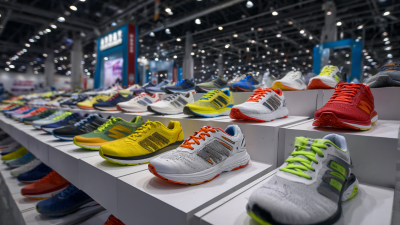
In the dynamic world of sports, the performance of athletes often hinges on the quality of their footwear. Athletic shoe manufacturers are at the forefront of innovation, constantly evolving their designs and technologies to enhance the capabilities of athletes across all levels. This exploration into the science behind athletic shoe manufacturing reveals groundbreaking advancements that not only improve comfort but also optimize performance, ultimately influencing the outcomes of athletic competitions.

From cushioning materials that absorb impact to lightweight structures that promote agility, the innovations brought forth by athletic shoe manufacturers are reshaping the landscape of sports. Advanced biomechanics play a vital role in creating shoes that cater to the specific needs of different sports and individual athletes. By delving into the intricate processes used in manufacturing athletic shoes, we gain insight into how these developments are meticulously crafted to support athletes in their quest for excellence.
As we unpack the multifaceted approaches of athletic shoe manufacturers, it becomes evident that their contributions extend beyond mere footwear. They are pioneering a new era where science and sport converge, creating a ripple effect that enhances athletic performance and inspires future generations of sports enthusiasts. Join us as we delve deeper into the innovations that propel athlete performance, transforming the footwear industry and the athletes who depend on it.
The athletic shoe industry has witnessed remarkable innovations in materials that significantly enhance breathability and comfort, two vital factors that influence athletic performance. According to a recent market research report by Grand View Research, the global athletic footwear market was valued at approximately $95.14 billion in 2021 and is projected to grow at a CAGR of 4.3% from 2022 to 2030. This growth is partly driven by advancements in materials that enhance the user experience, paving the way for better performance in sports and fitness.
One notable innovation includes the use of engineered mesh fabrics, which offer superior ventilation while maintaining structural integrity. Studies indicate that shoes utilizing these materials can improve airflow by up to 40%, effectively reducing moisture buildup and temperature during athletic activities. Additionally, technologies such as Flyknit and Jacquard knitting have enabled manufacturers to create seamless uppers that conform to the foot’s shape, providing a customized fit that enhances comfort. As athletes increasingly seek shoes that support long-lasting performance without sacrificing breathability, the integration of such innovative materials will continue to shape the landscape of athletic footwear.
The advent of 3D printing technology has revolutionized the manufacturing landscape of athletic shoes, enabling brands to push the boundaries of design and performance. Through additive manufacturing, companies can create intricate shoe components that were previously impossible to manufacture using traditional methods. This innovation allows for a more customized fit tailored to an athlete's unique foot structure, significantly enhancing comfort and minimizing injury risk during performance.
Moreover, 3D printing contributes to sustainability in shoe production. By utilizing only the necessary materials and reducing waste, manufacturers can create more environmentally friendly products. This method also streamlines the supply chain, as prototypes and final products can be produced on-demand, minimizing overproduction. As a result, athletes benefit from cutting-edge designs that cater directly to their needs, while the industry moves towards a more sustainable future, aligning performance enhancements with ecological responsibility.
| Feature | Traditional Manufacturing | 3D Printing |
|---|---|---|
| Customization | Limited options available | Highly customizable fit and design |
| Production Speed | Long lead times | Reduced time from design to product |
| Material Waste | High material waste | Minimal waste due to precision |
| Design Complexity | Limited by traditional methods | Allows intricate and complex designs |
| Cost Efficiency | Higher production costs | Potentially lower costs for small batches |
The footwear industry is witnessing a transformative era driven by innovations in performance enhancement features, particularly in cushioning systems and energy return technologies. The global badminton shoe market, expected to surpass USD 220 million, exemplifies this trend as athletes seek shoes that provide superior comfort and agility. Recent market research indicates an increasing demand for advanced designs that integrate cutting-edge cushioning to minimize impact while maximizing responsiveness during high-intensity play.
Cushioning systems have become critical for athletes, focusing on energy return technologies that not only absorb shock but also reuse that energy for propulsion. For instance, many brands are now utilizing materials that enhance the energy transfer from the ground up through the shoe, significantly boosting performance. Reports suggest that athletes equipped with these innovative shoes experience decreased fatigue and improved performance metrics, illustrating the profound impact of technology on athletic training and professional sports. As manufacturers continue to push the boundaries of performance footwear, the evolution of these technologies will likely shape the future of athletic disciplines.
Sustainability in athletic footwear has gained unprecedented attention as consumers increasingly seek eco-friendly options without compromising performance. Key innovations in materials, such as the use of recycled plastics and organic cotton, have transformed the production landscape. Brands are utilizing post-consumer waste to create durable, high-performance shoes, effectively reducing their carbon footprint. This not only mitigates the environmental impact associated with traditional materials but also appeals to a growing segment of environmentally conscious athletes.
Moreover, sustainable production practices have become integral to the athletic shoe manufacturing process. Companies are adopting methods that minimize water usage and energy consumption while ensuring fair labor practices throughout their supply chains. Advanced technologies, such as 3D printing, allow manufacturers to produce shoes with precision, reducing waste significantly. By prioritizing eco-friendly materials and sustainable practices, the athletic footwear industry is not only enhancing performance but also setting a standard for environmental responsibility, paving the way for a greener future in sports.
The intersection of biomechanics and shoe fit plays a critical role in enhancing athletic performance. Recent studies have indicated that shoes specifically designed to align with an athlete’s unique foot shape can improve performance by up to 5%. According to a report by the American Council on Exercise, a poor fit can lead to decreased efficiency and increased risk of injury, impacting an athlete's training and overall success. Innovations in 3D scanning technology now allow manufacturers to create custom shoes that accommodate individual foot contours, resulting in a fit that can boost performance substantially.
Moreover, advances in materials science have led to the development of lightweight yet durable fabrics that enhance comfort and support. Research highlighted in the Journal of Sports Sciences indicates that shoes utilizing engineered mesh technology can improve ventilation and reduce weight, contributing to better overall athletic performance. Enhanced cushioning systems that adapt to the runner's stride further optimize biomechanics, which has been shown to reduce ground impact forces by nearly 20%, promoting a healthier running style. These technological advancements in shoe manufacturing are shaping the future of sports performance, ensuring that athletes have access to equipment that not only fits well but also maximizes their potential.






